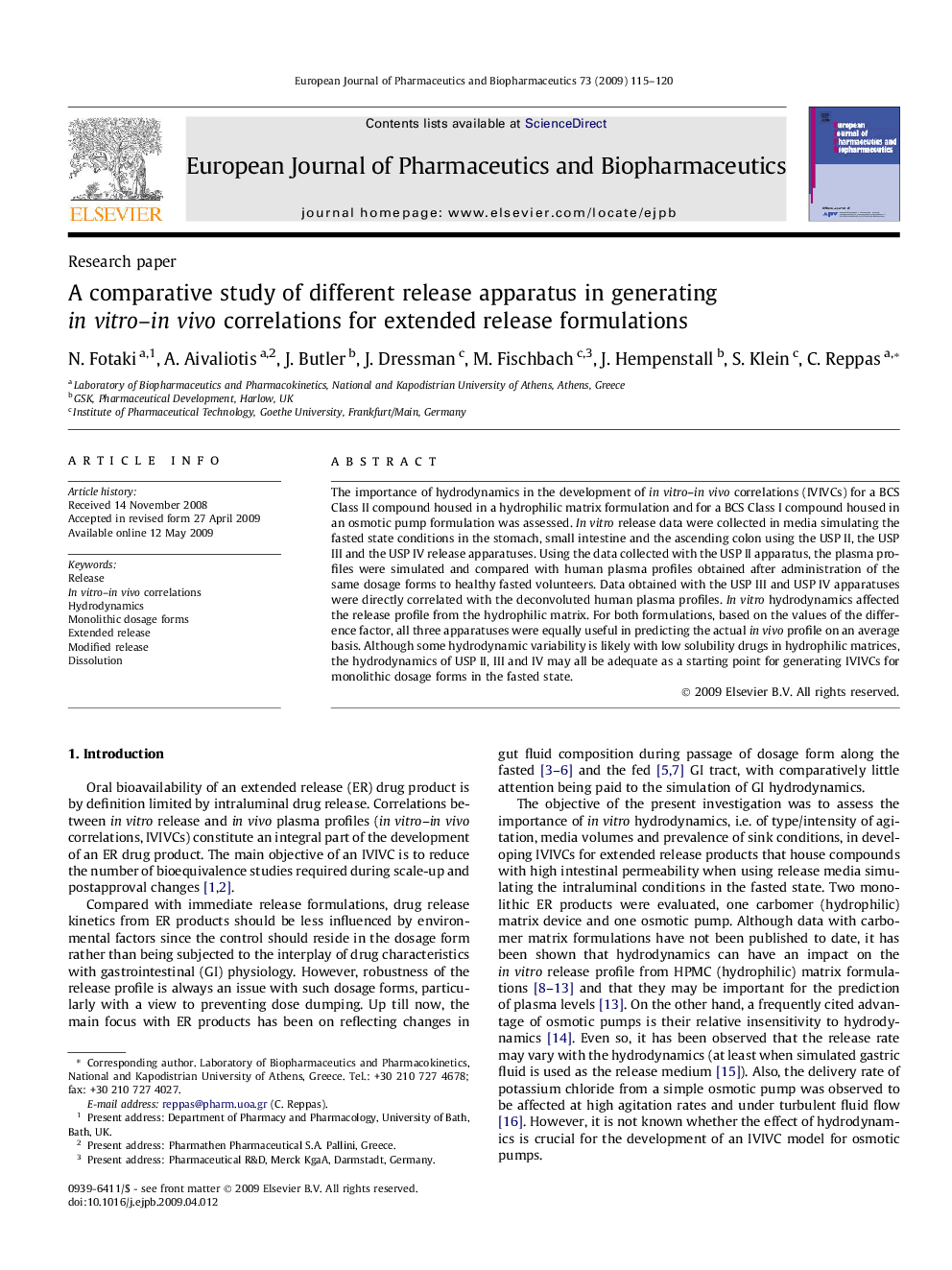| Article ID | Journal | Published Year | Pages | File Type |
|---|---|---|---|---|
| 2085597 | European Journal of Pharmaceutics and Biopharmaceutics | 2009 | 6 Pages |
The importance of hydrodynamics in the development of in vitro–in vivo correlations (IVIVCs) for a BCS Class II compound housed in a hydrophilic matrix formulation and for a BCS Class I compound housed in an osmotic pump formulation was assessed. In vitro release data were collected in media simulating the fasted state conditions in the stomach, small intestine and the ascending colon using the USP II, the USP III and the USP IV release apparatuses. Using the data collected with the USP II apparatus, the plasma profiles were simulated and compared with human plasma profiles obtained after administration of the same dosage forms to healthy fasted volunteers. Data obtained with the USP III and USP IV apparatuses were directly correlated with the deconvoluted human plasma profiles. In vitro hydrodynamics affected the release profile from the hydrophilic matrix. For both formulations, based on the values of the difference factor, all three apparatuses were equally useful in predicting the actual in vivo profile on an average basis. Although some hydrodynamic variability is likely with low solubility drugs in hydrophilic matrices, the hydrodynamics of USP II, III and IV may all be adequate as a starting point for generating IVIVCs for monolithic dosage forms in the fasted state.
